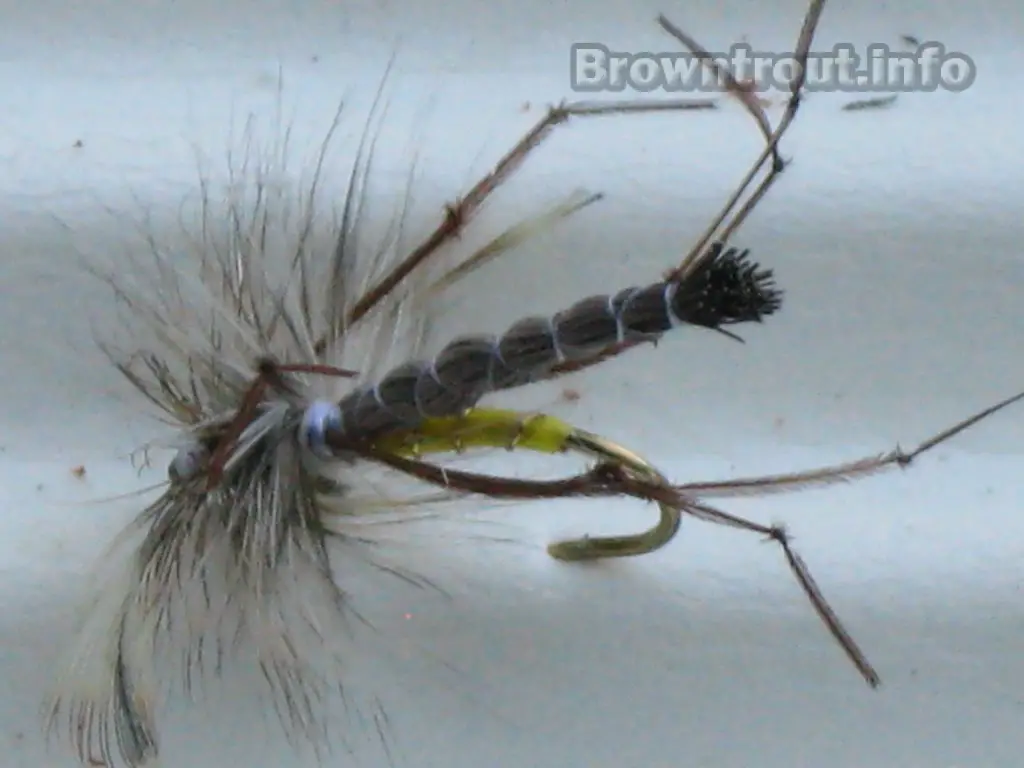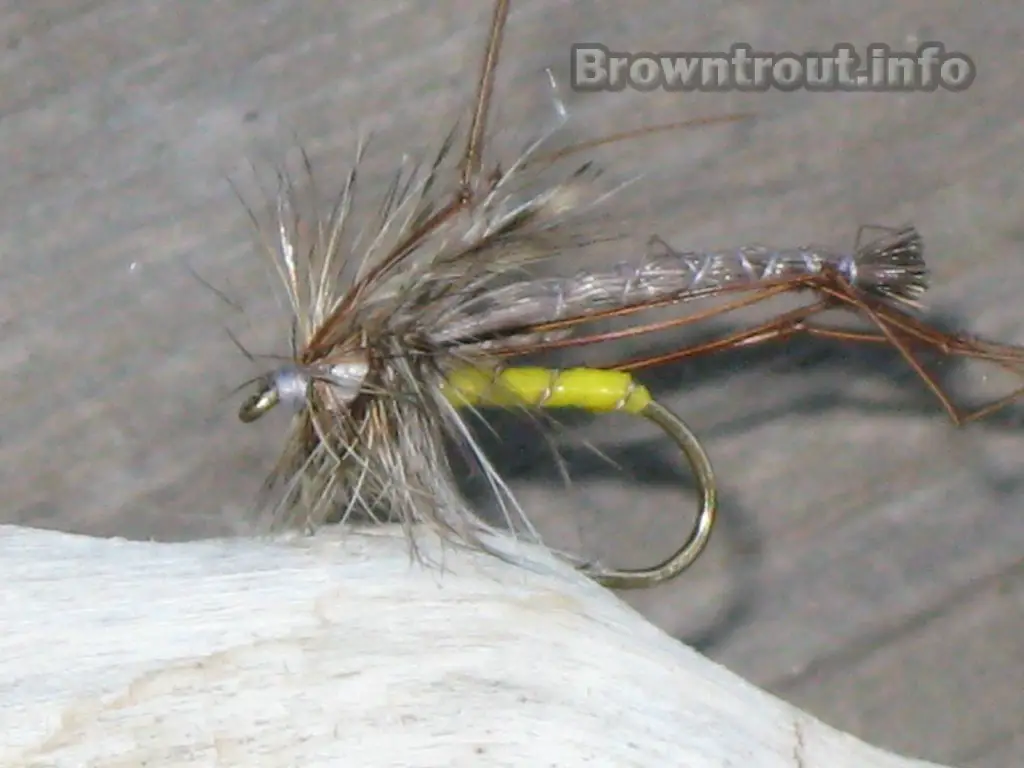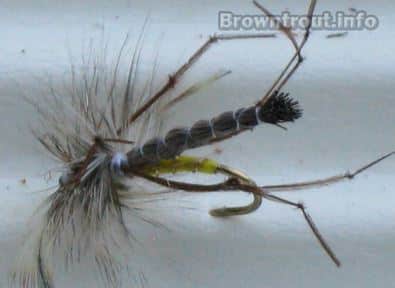This post was last updated on March 31st, 2016 at 01:46 pm
 Buy Craneflies Here at Our Flyshop Only .50¢!
Buy Craneflies Here at Our Flyshop Only .50¢!
The Crane fly is a great versatile pattern that trout really do eat! I have found this particular trout fly to work best later in the evenings when there aren’t any mayflies hatching. These are a very widespread insect and I am quite certain they have populations in every trout fishing area in the US. The cranefly trout fly will work as a general attractor pattern when there are not prevalent hatches taking place. The trout do like these flies and it would be advisable for you to tie some up and include them in your fly box.
The cranefly is also known as the “mosquito eater” or “daddy longlegs” in parts of Canada. The Crane Fly does not however eat mosquitos, but it does look like a giant version of one.
Tying the Cranefly Trout Fly Pattern
This fly is actually quite simple to tie and you will only need a few ingredients that you probably already have such as:
- Some variety of light colored hackle for the front portion of the fly (even saddle will work for this)
- Deer, elk hair or even foam will work well for the long body of this fly.
- Pheasant tail for the legs
- Floss in whichever color you choose to color the hook and give your crane fly pattern a little more realistic look.
- Ribbing of sorts to really give your crane fly body the look of segmentation.
These flies have legs kind of going all over the place you you don’t have to get picky about where they end up or which way they are facing. The best way to easily tie this fly is to make your deer hair or foam body in advance because it will be easy to attach later.
data-ad-client=”ca-pub-3967855701075581″ data-ad-slot=”5526314811″>
You should also make the legs of the cranefly in advance. The legs are simply pheasant tail tied in simple knots. Every where you put a knot will cause the legs of this pattern to change direction giving you a very realistic appearance.
Steps for Tying the Crane Fly Pattern
- Tie the ribbing to the most rear portion of the hook. Wrap the hook shank in your desired color and proceed from back to front
 with the ribbing and tie it off.
with the ribbing and tie it off. - Attach your pre-made body near the front portion of the hook.
- Tie on the legs: you should use 6 to 8 for this. Of course the cranefly only has six legs, but we are really trying to accentuate these legs so the trout can identify this fly for what it is.
- Finish by wrapping the front portion with your hackle. If you want to get fancy, you can use tips of the feathers and make wings and include them before you tie the hackle on in the standard fly tying manner.
You might also enjoy seeing some of the cranefly nymph or larva patterns here

